NOVEMBER 4, 2022 : After a good night’s sleep in Larissa, we did our usual morning routine and then took off towards Volos. We learned in Larissa that it helps to call ahead, so we rang the Jewish Community Office in Volos and told them we would like to visit the synagogue. The woman spoke a broken English, but we understood that she will call us back. Skeptical me, I expected never to hear from her again. A few minutes later, she really did call us back and said she found someone to open the synagogue and we can come visit, but first we must email her photos of our passports. This is the usual security precaution taken here. Luckily, we had photos of our passports previously for something else, so we just forwarded that email and we were all set.
In Volos, we drove straight to the synagogue. The elderly caretaker was out watering the plants in the yard and opened the gate for us. Although he did not speak any English, using google translate we managed to communicate. First, he escorted us inside the synagogue and then he showed us the room where the community has Friday night dinner together. In Volos, Shabbat comes in now about 17:00, but Friday Night services are held at 21:30 at night. We later learned that they start so late because many of the congregants work in the shops, and the shops only close at 21:00. After services, there is a community meal together every week. We were invited to join, but they let us know that the food is not kosher. There are no Saturday morning services.

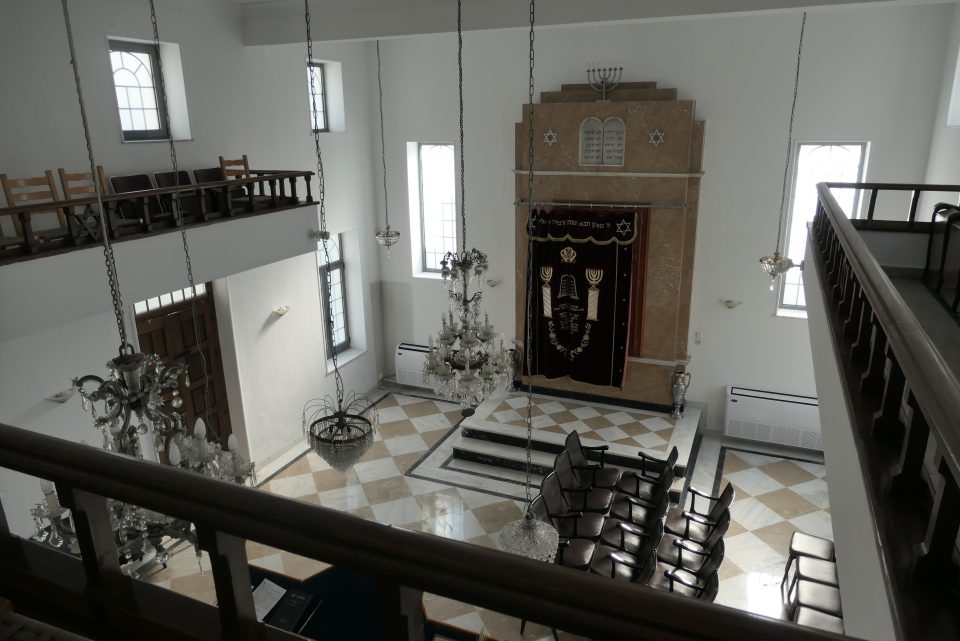
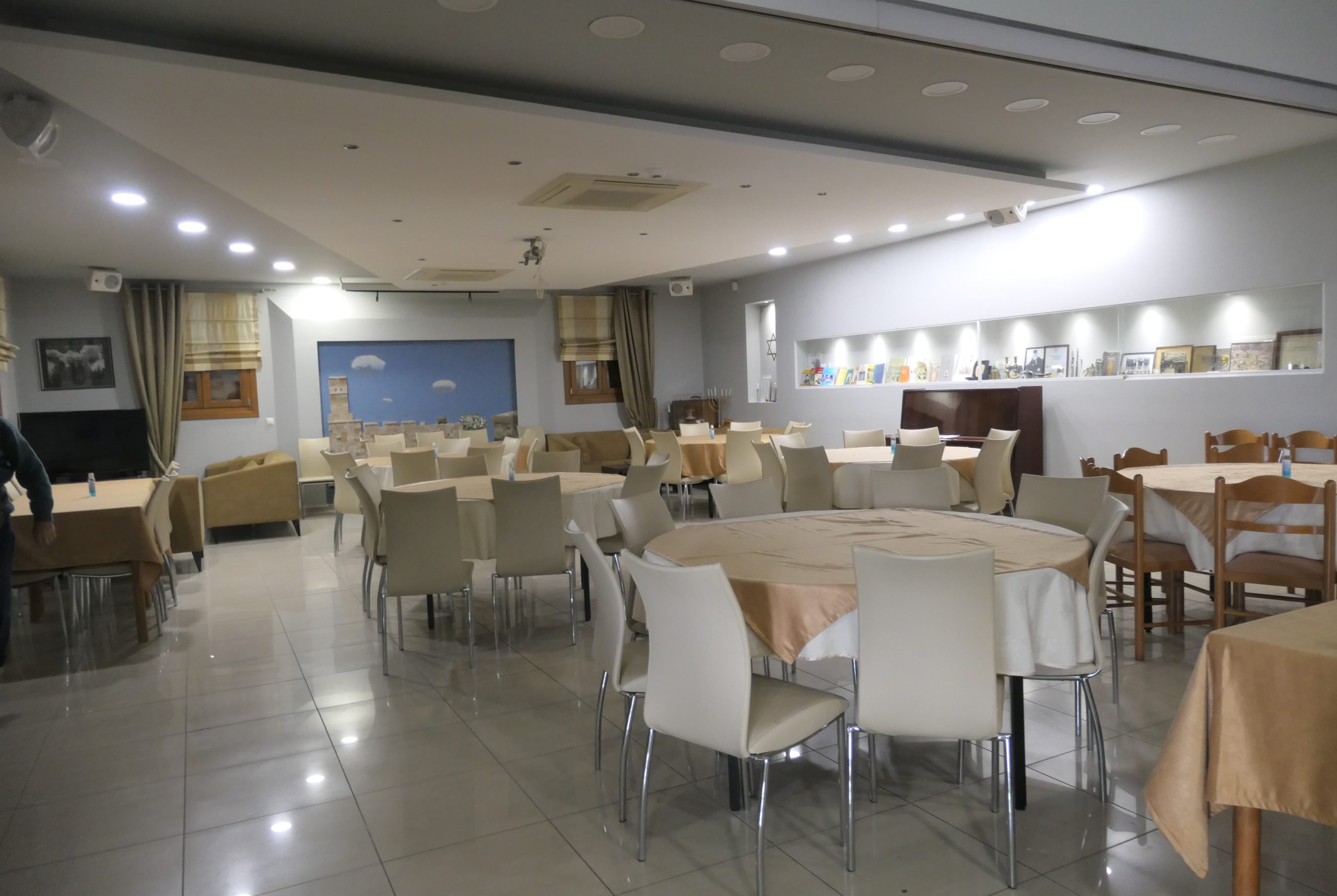
Reading about the history of this synagogue we learned that this is the third synagogue built on the same site. The first was destroyed in WW II and the second collapsed in a catastrophic earthquake in 1955. The current building was built to withstand earthquakes and was inaugurated in 1960.
Two of the streets adjacent to the synagogue were renamed to honor Jews – one is Palaistinis (Palestine) street and the other Moyseos (Moses).

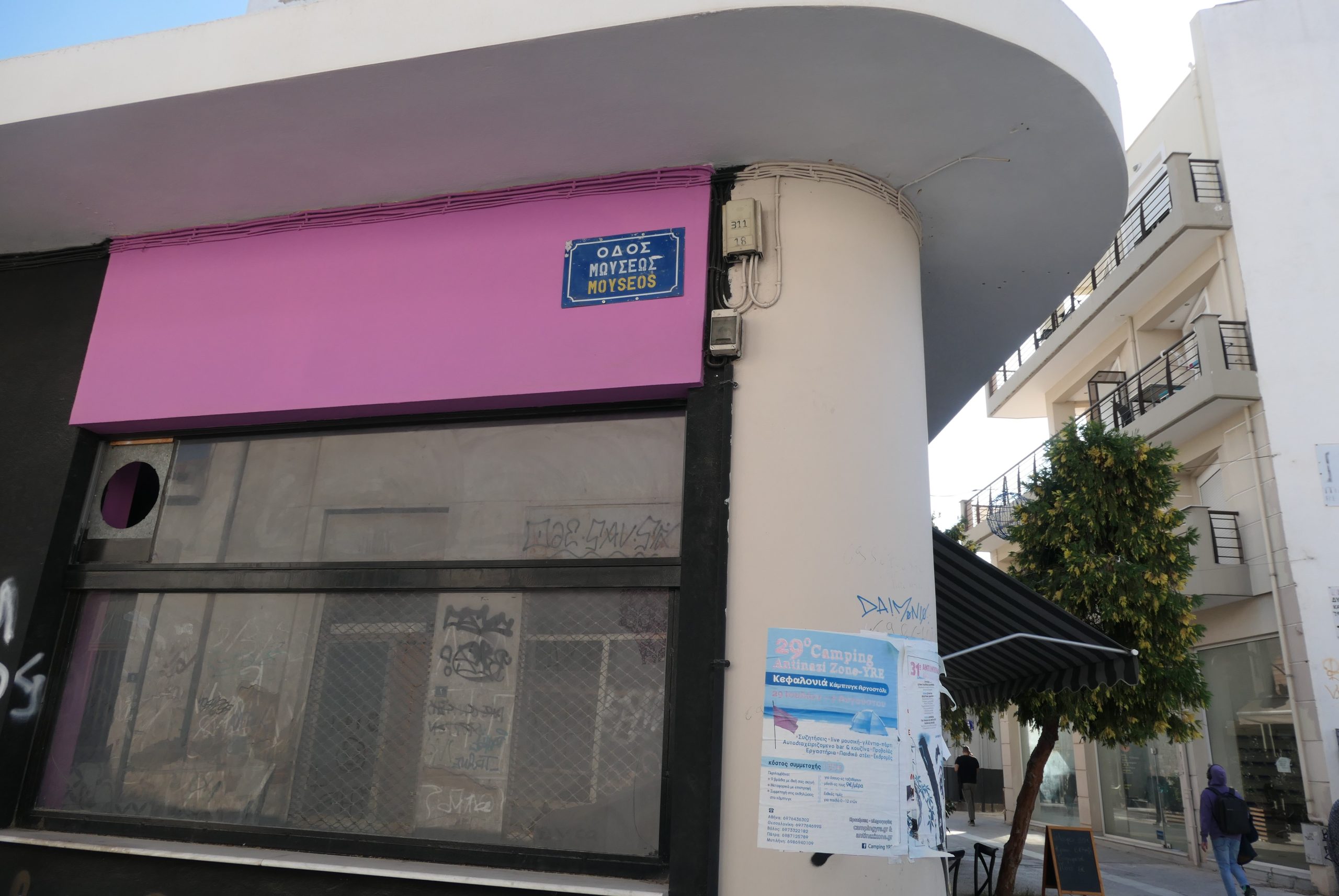
From there we decided to drive to the tourist information office. On the way we passed a holocaust memorial. We knew there was one in the city, and we did not know where, and now we were luckily to have stumbled upon it.
In 1937 the Volos community numbered 980 Jews. At the beginning of the war, 71 Jews were drafted and fought on the Greek front. In October 1940, the city was conquered by the Italians. The Italians left the Jews alone. In September 1943, after Italy surrendered to the Allies, the Germans entered Volos. The chief rabbi of Volos, Rabbi Pessah, was asked by the Germans to give them information about Jewish assets and functions. The rabbi procrastinated and warned the Jews. Many found shelter with local Christians in neighboring villages and received forged documents. A few Jews fled into the hills and joined the resistance. In March 1944, 155 Jews were found by the Nazis and sent to the death camps. When the city was liberated in October 1944, unlike other places, most of the Volos Jews survived the war.
In 1998, the Municipality of Volos erected a Holocaust Monument in a central square. On the base, there is a small sign that says “In Memory of the Volos Jews Victims of Nazism”.
The monument is four sided and has the Shema prayer (Hear O’ Israel) on three sides. I found it very moving.
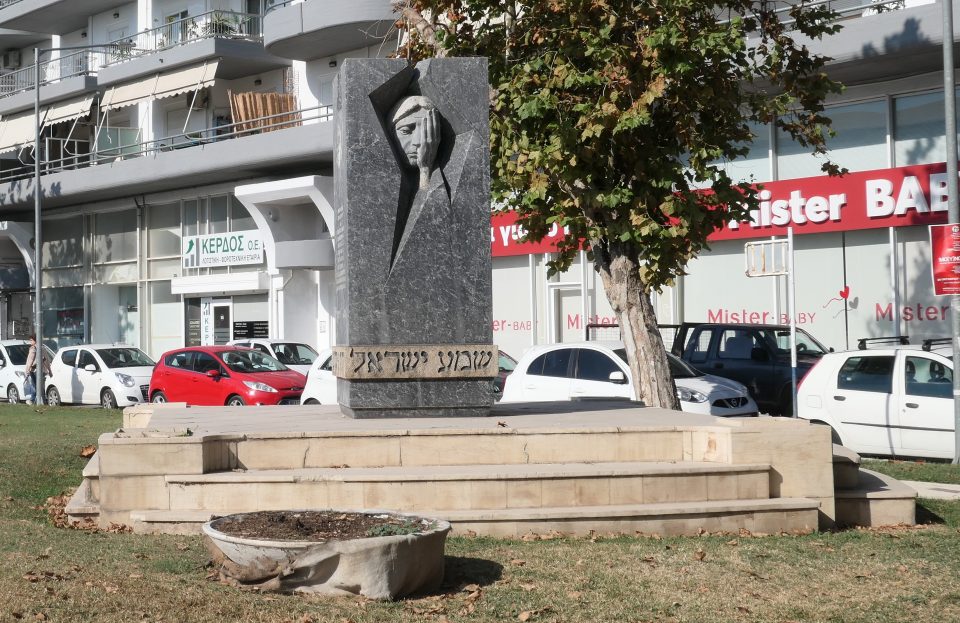
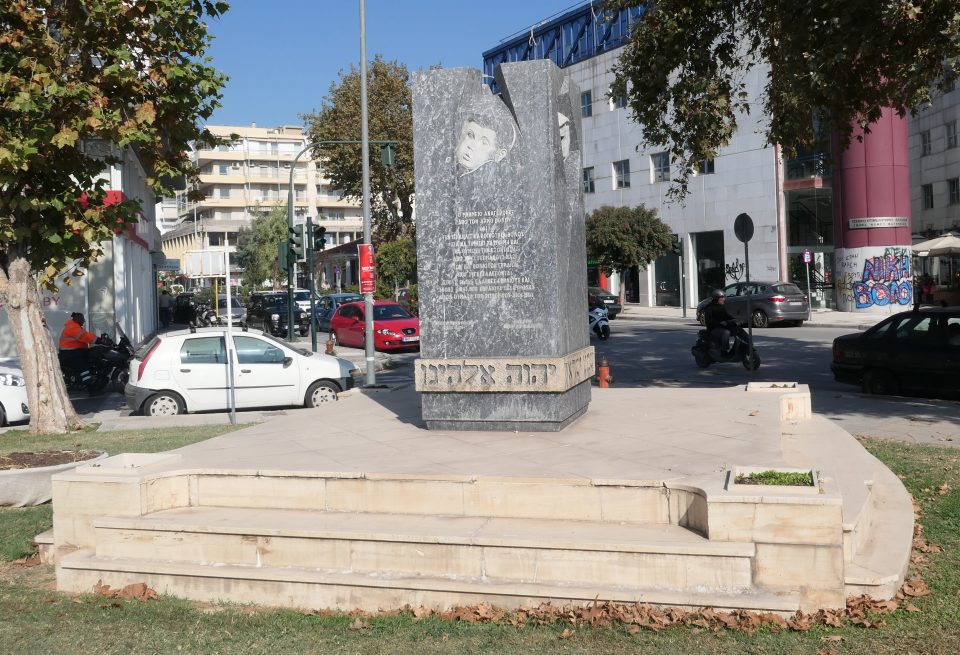
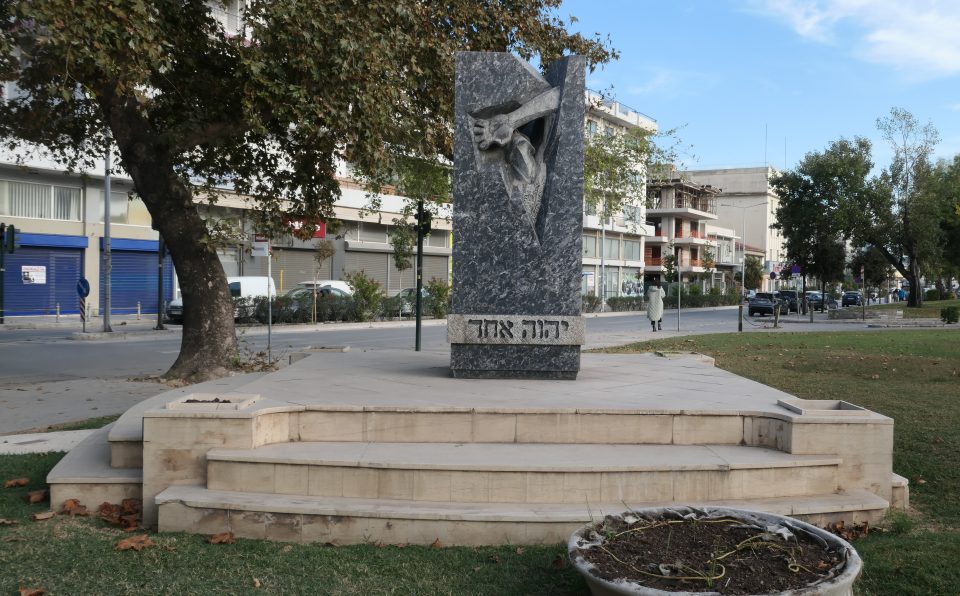
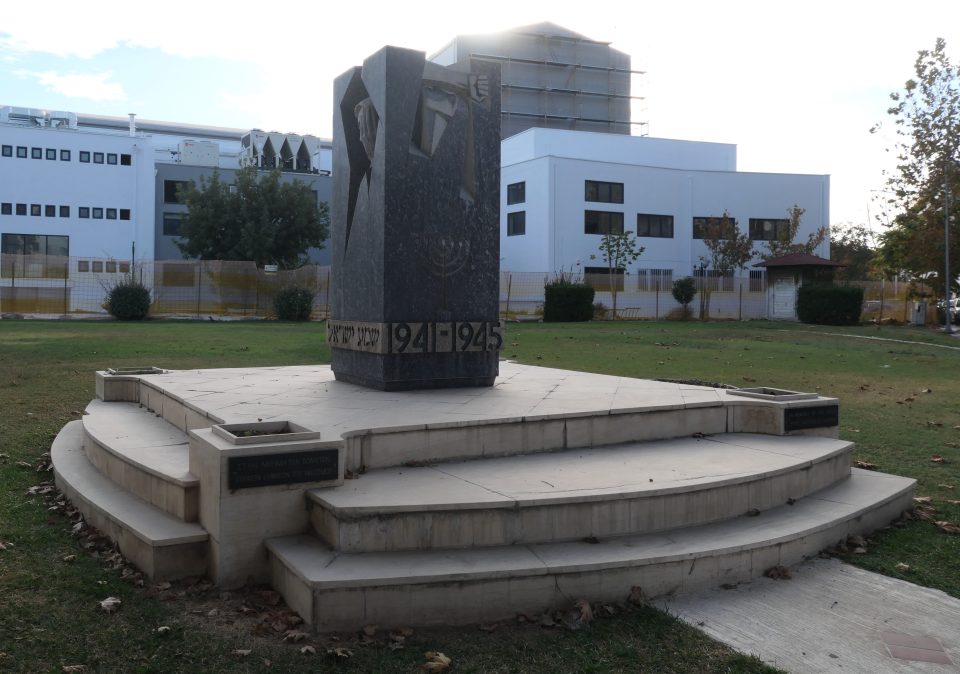
So far, in Volos, we had seen a synagogue, two streets and a monument – four sites verified for Wandering Jew. We were doing good today.
Up to now, all the cities we visited either did not have a tourist information office or it was closed. Here in Volos, we walked into a large room, with three clerks (we were the only ones there). On the internet I read about a map of street art in Volos that is available at the tourist information. I thought this would be a good thing for us to do on Shabbat. The counterperson gave us the map and asked where we are from. When we said Israel, she went and returned with a thick booklet about what to do in the area all in Hebrew. That was a surprise.
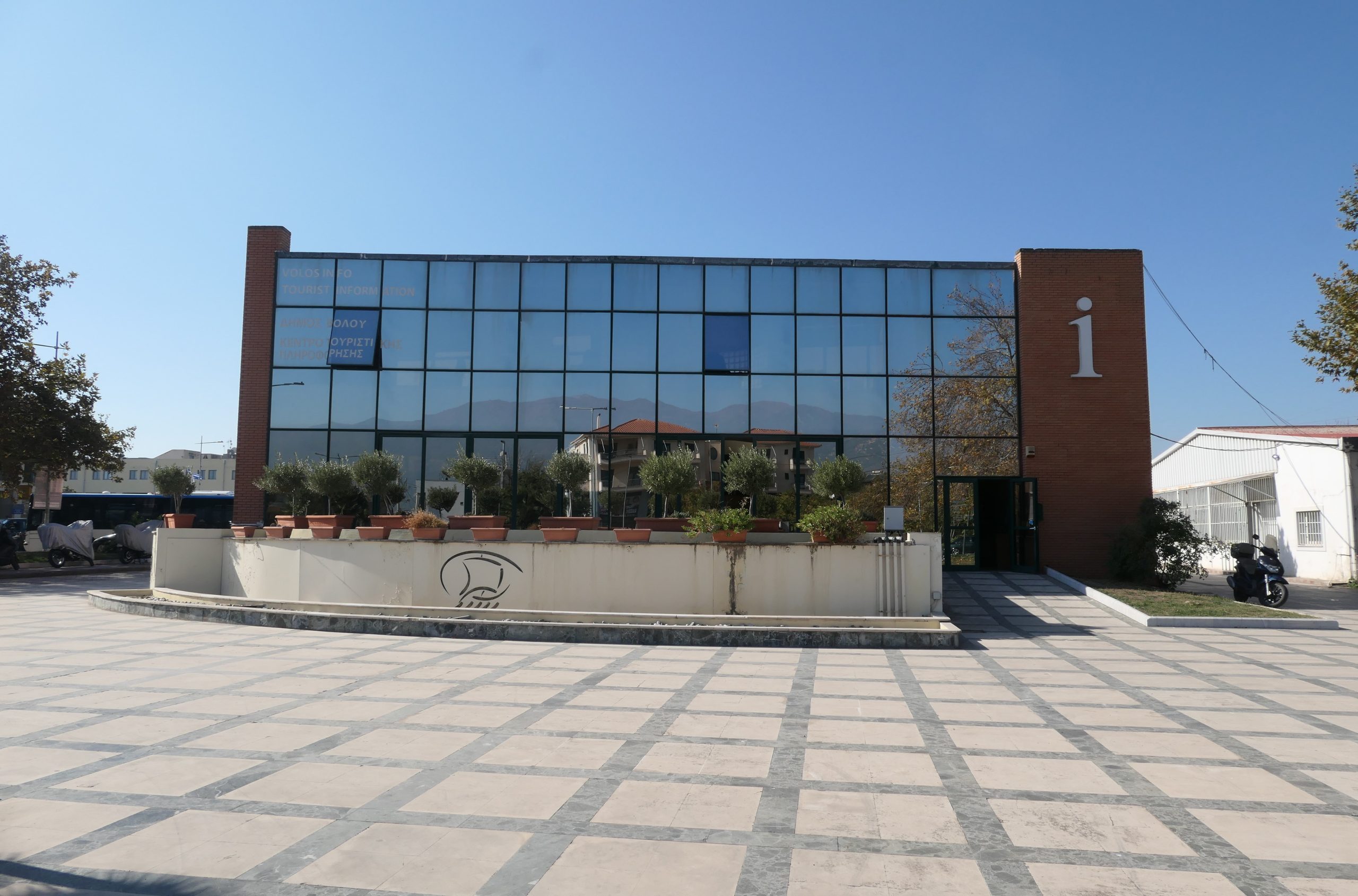
Our next destination was the New Jewish cemetery, only a couple of kilometers away. We drove there and once again noticed a solid white wall with a closed gate. The cemetery sits on the intersection of two large streets. On the street we had come on, the sidewalk was almost non-existent. No room to place a ladder. We parked the car and walked around to the other side. It seemed if we could get into the neighboring yard, we could place a ladder there and see above the wall. While Mark was figuring out where and how best to set up the ladder, I went to photograph the cemetery gate. I noticed that although it was closed, there was no lock. I easily pushed it open and walked right in. We were so used to the Jewish cemeteries being locked, that it did not even occur to us that it might be open. There was a caretaker sitting near the entrance and he had no problem with us walking around.
The cemetery has recent graves, but also many old tombstones that were brought over from the Old Jewish Cemetery before it was demolished and built over. Some of these ancient tombstones line the wall. The oldest one we saw was from the 1860’s – over 150 years old. Many of the older ones, the writing is beyond recognition. On some, the decorations – a Jewish star – still are clear, but the letters can no longer be read. The cemetery also has some very recent graves, a testimony to the community that still exists here.
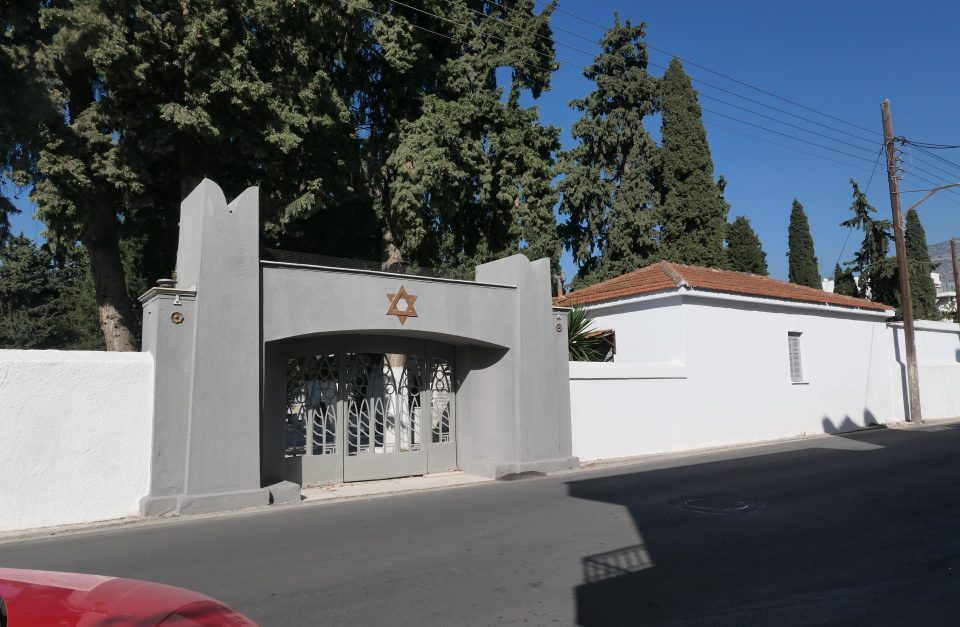
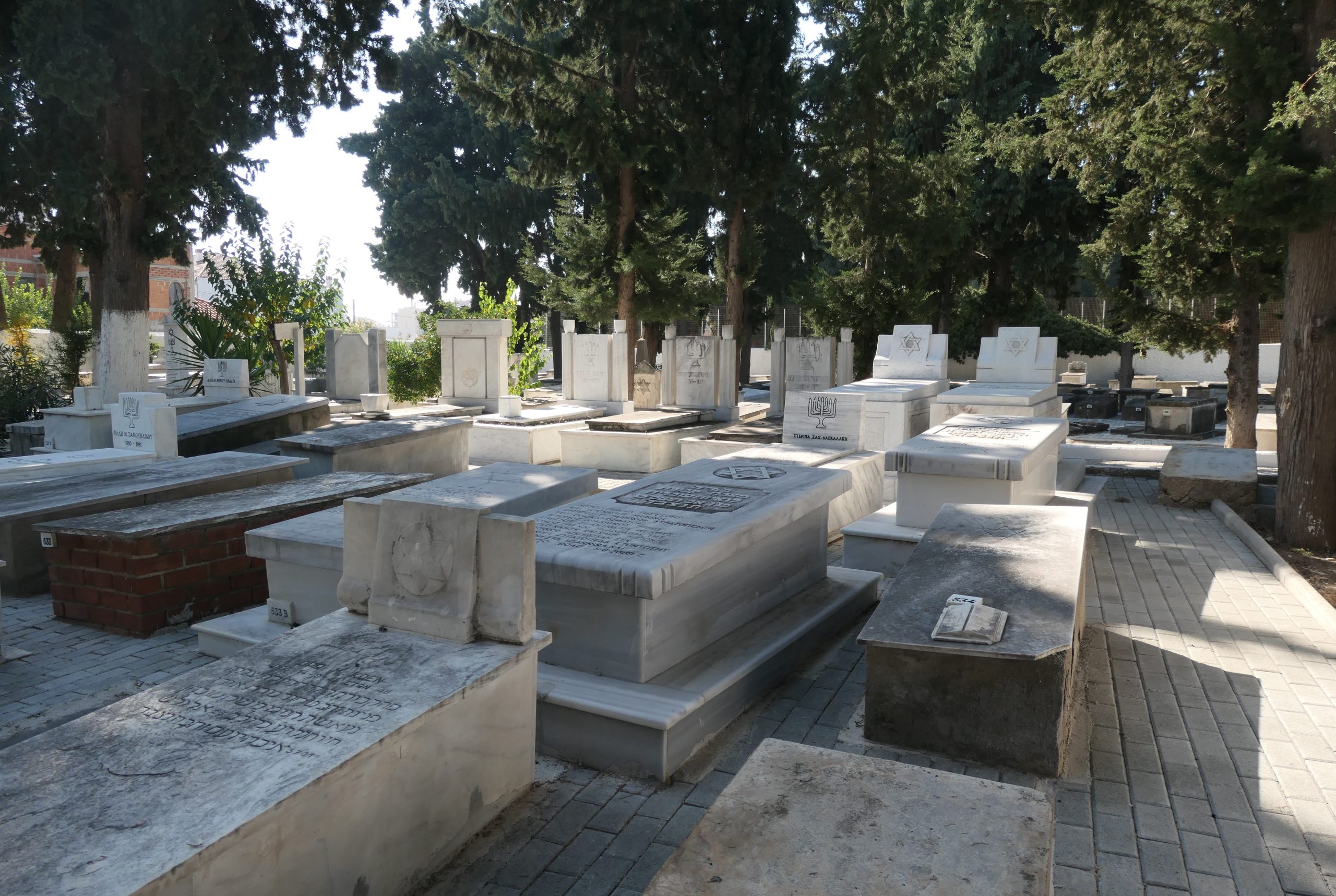

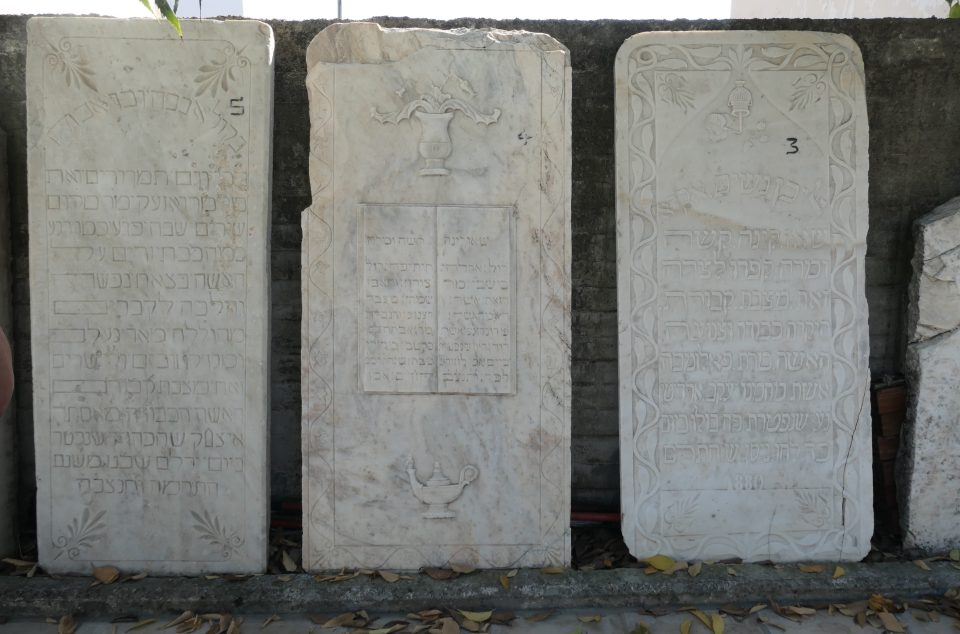
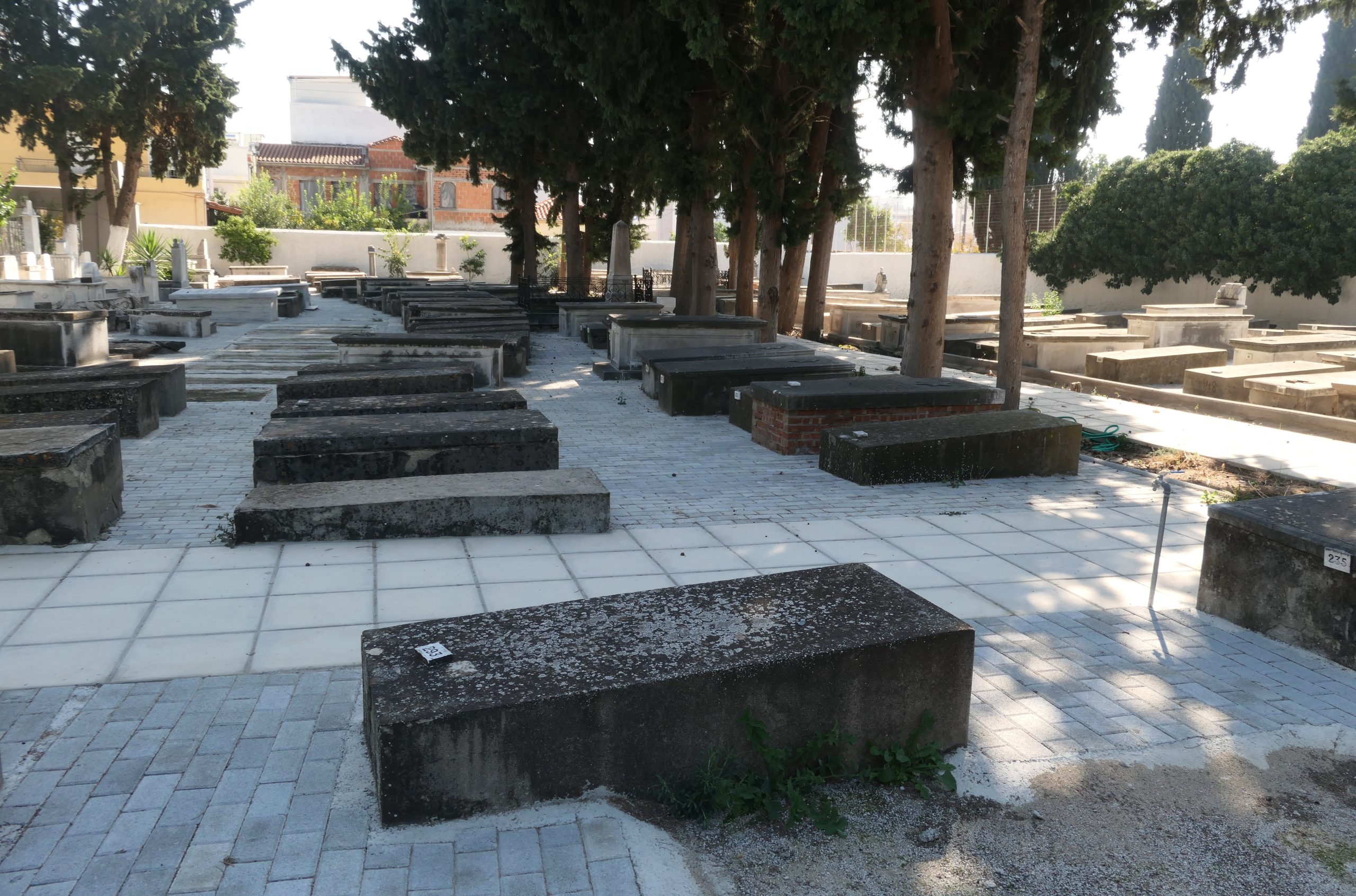
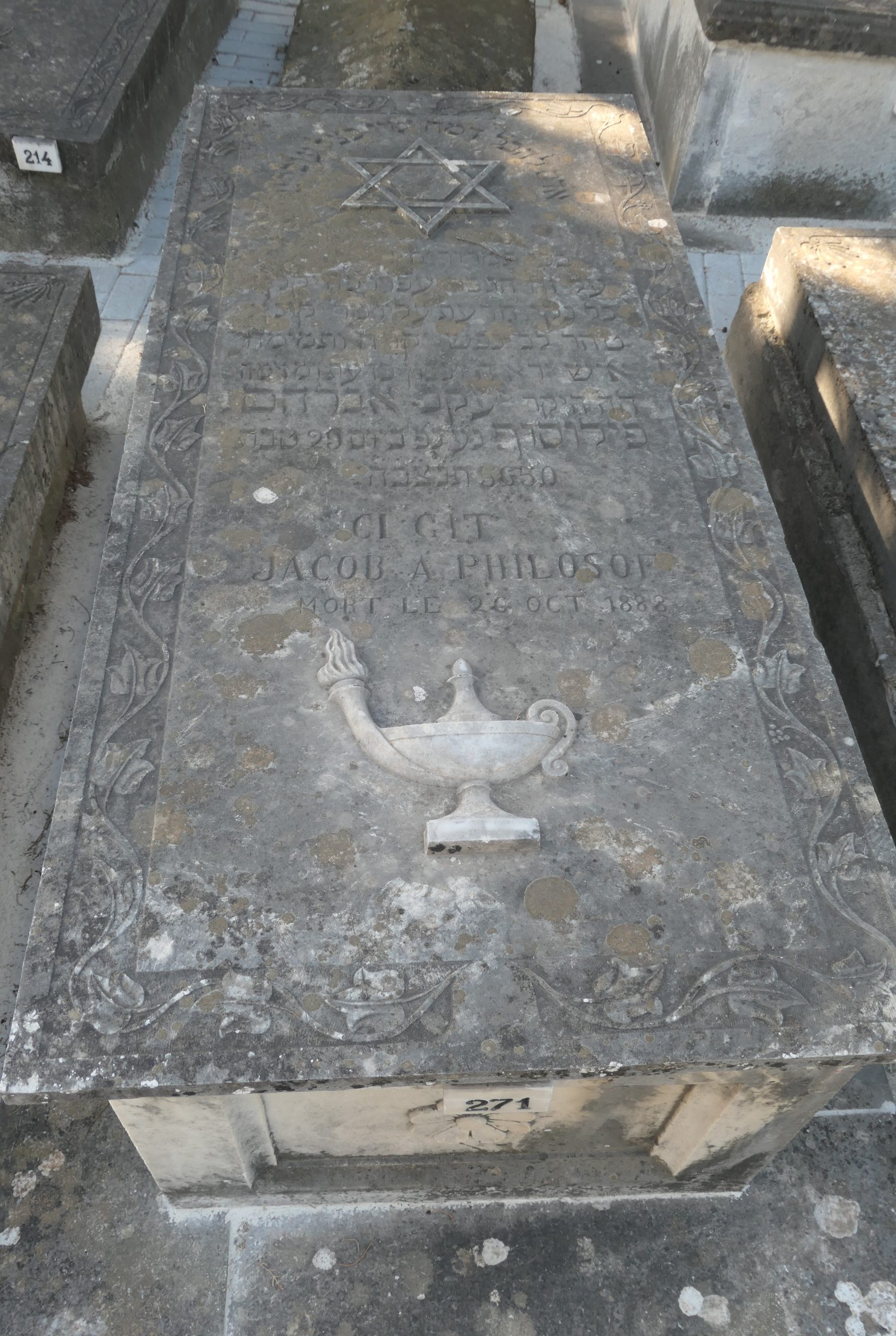

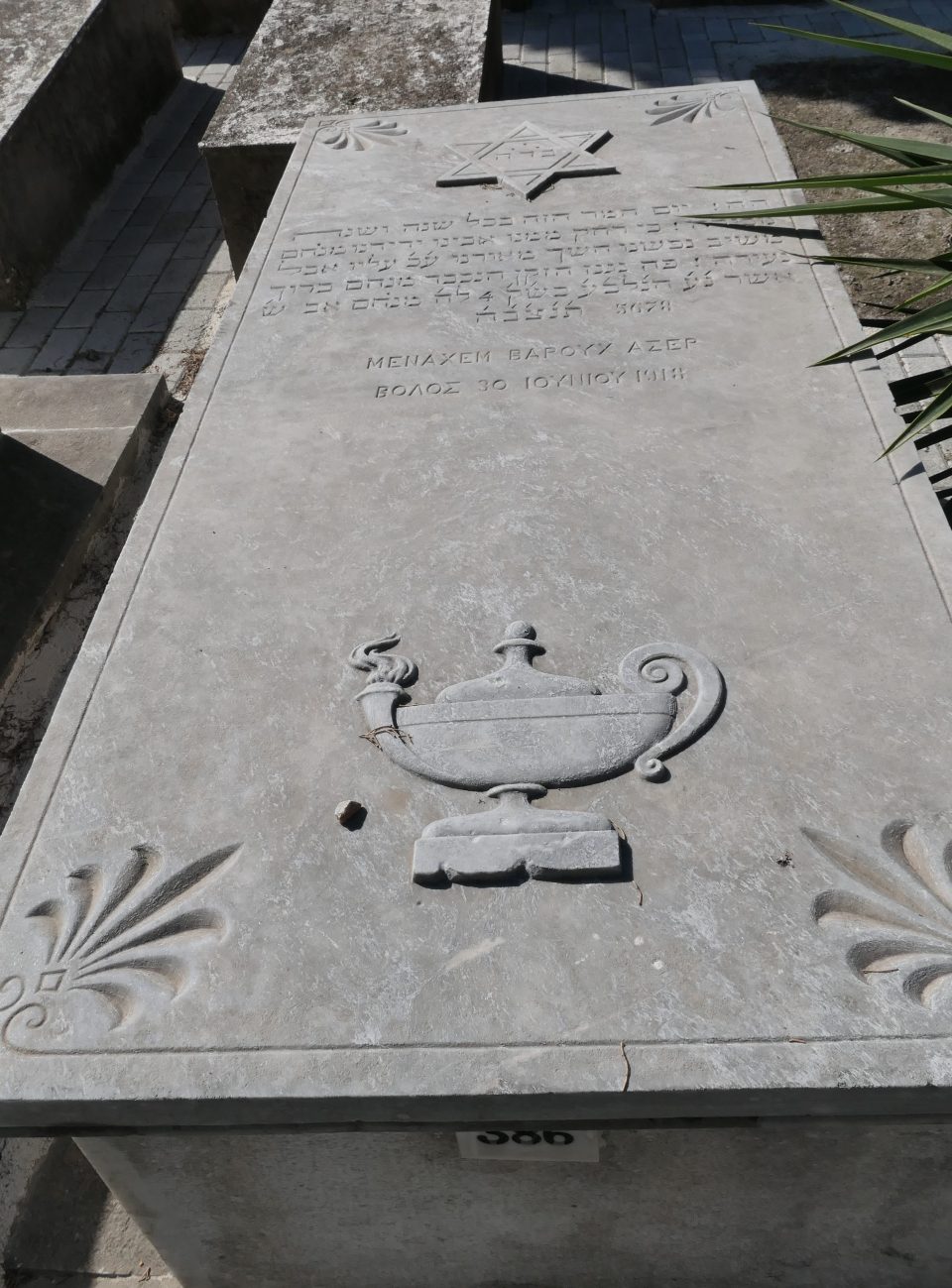
At the entrance to the cemetery were two memorials. The first is a Holocaust memorial with the names of Jews from Volos who perished. The second is a memorial to the former chief rabbi of Volos, Rabbi Pessah, whose actions helped save the majority of Jews in Volos during the Holocaust. After the war, in 1946, he went on to become the chief rabbi of Greece. He died in 1955, and in 1957, his remains were brought to Jerusalem.

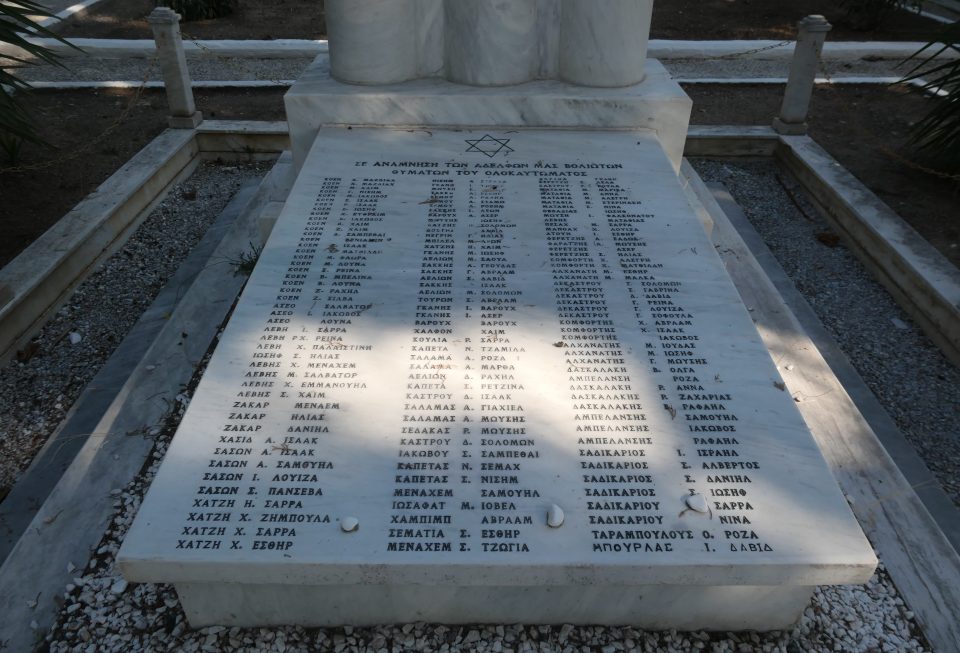

Today was Friday, and we still needed to prepare Shabbat. We drove to the nearest supermarket – Market In and were pleasantly surprised. It was the nicest supermarket in Greece we had been to yet, and there we hit the jackpot. A whole large section of frozen vegan meals. Our Shabbat just got a lot tastier.
We went to check into our apartment and drove a long time looking for parking. This gave us a chance to explore the city streets. Volos and Larissa are almost the same size, each with a population of about 145,000. Volos however feels much more cosmopolitan. The pedestrian center seems more modern and sophisticated. Larissa was okay, Volos is much nicer.
Luckily, we eventually got a parking spot exactly in front of our building. We checked in, and discovered that our apartment has a huge porch. We can see the port on one side and the mountains on the other. Very nice.
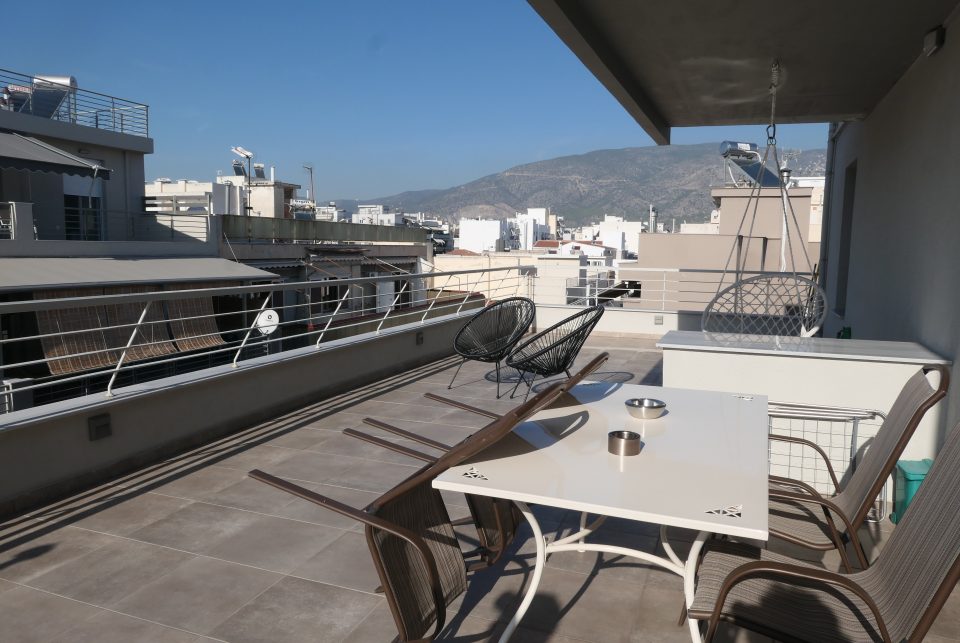
We prepared Shabbat, lit candles, Mark said evening prayers and we had our Shabbat meal. After all that, there was still two hours more to go before evening services in the synagogue…
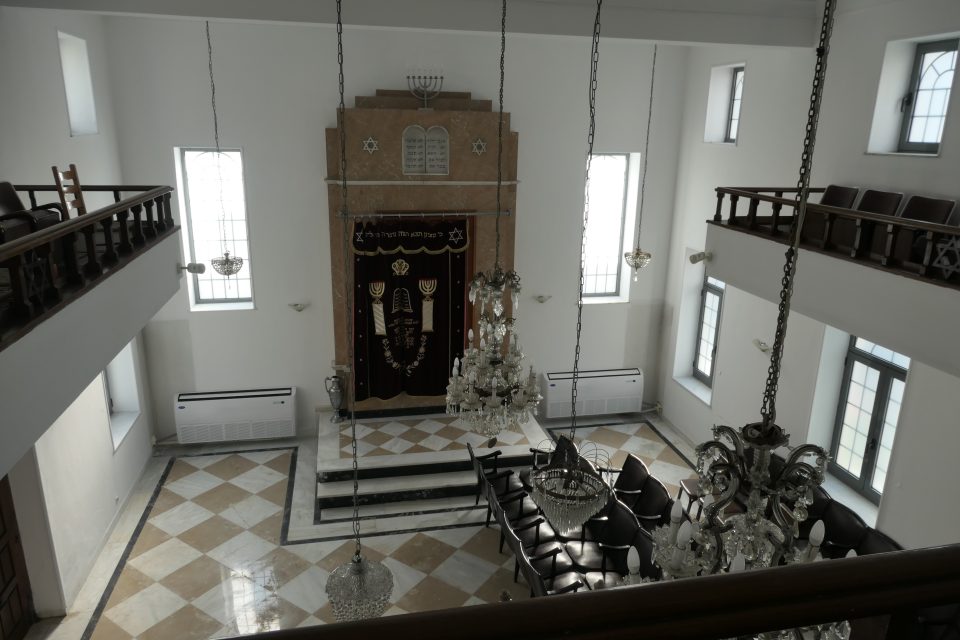
sounds like a very nice day!
Very nice!
The pitcher on the graves looks like Alladins lamp
Love the mountain view!